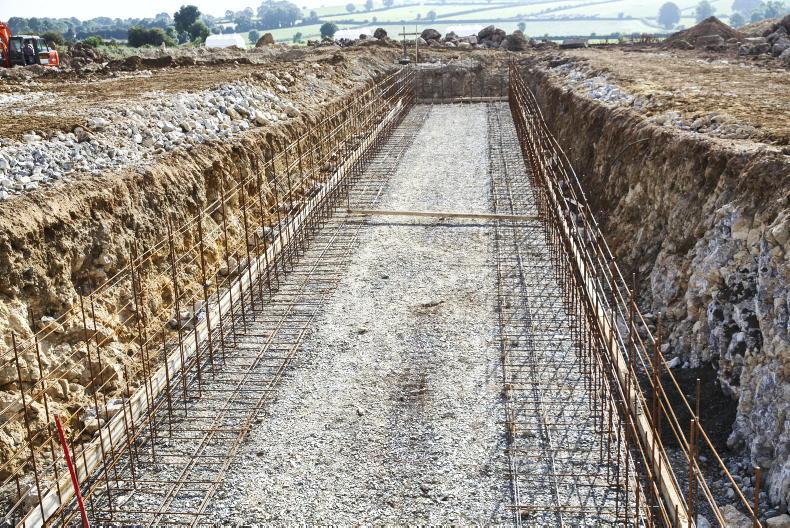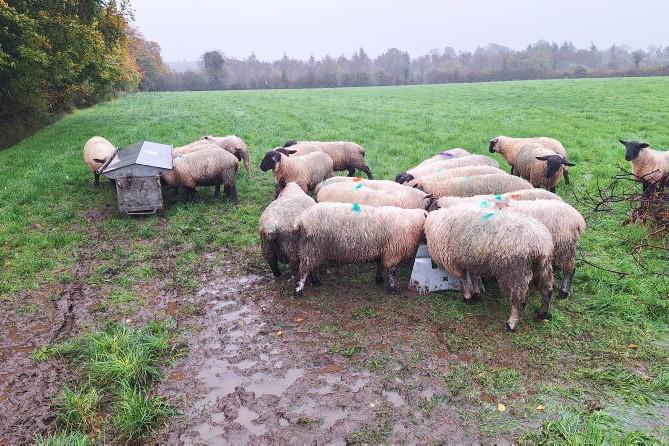This week’s colder and drier weather will allow for farmers who haven’t already done so to get mid-season lambing ewes indoors in dry conditions.
Farmers had been struggling to get ewes dry before housing, with some pneumonia issues arising from fleeces drying in poorly ventilated sheds in mild conditions. This week will be a better opportunity to house and scan any remaining ewes.
When housing, both lying space and feeding space are the two critical areas to consider when stocking pens, with feeding space often being the limiting factor.
Regarding lying space, ewes on slats sill require approximately 10% less space per head than those housed on straw.
A typical crossbred ewe will fall into the medium category and will require 1.2m of lying space and 500mm of feed. Taking a standard 4.8m-long bay, there is adequate space for nine ewes to eat at the one time from the front of the pen.
Regarding lying space, assuming it’s a bedded pen, the pen needs to only be 2.25m deep (7.5ft) for there to be adequate lying space. With many pens being deeper than this, the temptation is there to fill pens with more sheep.
If this is done, then additional feed space must be created.
Walk-through feed troughs will work well and can be used to service pens either side of it, but will likely lead to reduced lying space.
If using walk-through feeders, 600mm of feed space needs to be subtracted to represent the length of one sheep that will block off space where a walk-through trough is placed at a right angle to the front of the pen. Where possible, feed out on both sides of a pen.
Ad-lib feeding is very rarely ad-lib in sheep, with sheep rushing to new feed leading to bullying and possible abortions, so correct feeding space is critical.
Winter shearing
Farmers who find themselves tight on lying space can increase space through winter shearing.
Removal of the bulky winter fleece from ewes can increase pen capacity by up to 15%.
Winter shearing also brings the additional benefits of it being easier to monitor BCS of ewes, ewes being cleaner at lambing time and ewes seeking shelter more readily when turned out with young lamb’s post-lambing.
Trials have also indicated increased lamb birth weights with no increased lambing difficulty when ewes are winter shorn. Ewes will require six to seven weeks of wool regrowth before turning out.










SHARING OPTIONS